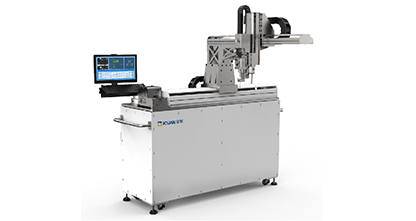Multi-axis control systems,a key technical module in automated assembly equipment,are widely used in automatic screw machines.Their primary function is to drive multiple locking axes synchronously or asynchronously,achieving multi-point locking of complex components and optimizing batch assembly cycle times.
Automatic screw machines support basic motion control for the X,Y,and Z axes and can also be expanded with multiple Z axes for coordinated operation with multiple screw heads.By configuring control system parameters,each locking axis can be independently controlled according to the set path,torque,and speed,adapting to diverse product structures and assembly requirements.
Multi-axis systems typically consist of servo motors,control cards,linear modules,and locking modules,and are integrated with motion control software for coordinate setting and trajectory planning.They support point-to-point positioning,continuous path control,and torque closed-loop feedback,ensuring consistent precision and balanced pressure at each locking point.

In multi-axis coordinated control scenarios,parallel locking can be achieved,improving overall cycle efficiency.This is suitable for applications such as large-scale housings,double-row screws,and partitioned modular locking.Some systems also feature automatic compensation to prevent locking errors caused by slight platform offsets.
The multi-axis structure can be flexibly combined with functional modules such as vision positioning,code scanning and binding,and data traceability to create intelligent assembly cells.For high-speed production lines,it supports coordinated control of four,six,or even more axes to achieve multi-station collaborative operation.
The introduction of a multi-axis control system enhances the scalability and flexibility of automatic screw machines,meeting the demands of rapid screw fastening,high-precision operation,and flexible assembly of complex structural parts.It is a key support for improving the level of intelligent screw fastening.